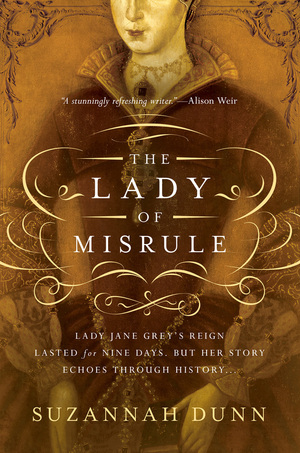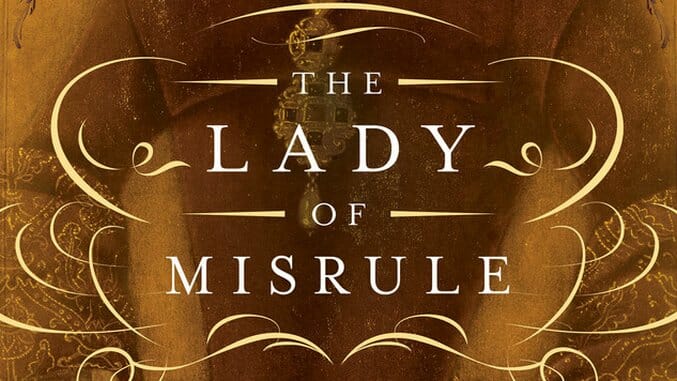Introducing Endless Mode: A New Games & Anime Site from Paste
The first thing readers will notice in Suzannah Dunn’s The Lady of Misrule is the tone. Although the novel is set in 1553, Dunn doesn’t go to great lengths to make the book, which accounts for the last months of Lady Jane Grey’s life, read true to its period. The narrator is 16-year-old Elizabeth Tinley, and she sounds every bit like a teenager. But if the technique is initially disorienting, the novel resolves into a compelling and engaging portrait of two teen girls experiencing history in a microcosm.
In the summer of 1553, Lady Jane Grey was named as the successor of King Edward VI, who was just 15 when he died. Whisked to the throne by her father-in-law, Jane’s Protestantism clashed with the Catholic power structure. People quickly rallied around Mary Tudor, the Catholic daughter of King Henry VIII, and Jane was arrested a mere nine days later.
 Dunn’s novel opens with Jane’s arrival at the Tower of London with Elizabeth Tinley, an escort from the lesser nobility who must wait with Jane until the trial. The two girls struggle to find common ground; Jane is austere and spends much of her time reading, while Elizabeth is consumed by a love affair she left behind. But as time drags on and Jane’s fate remains unclear, the girls form a bond born of forced proximity and begrudging appreciation.
Dunn’s novel opens with Jane’s arrival at the Tower of London with Elizabeth Tinley, an escort from the lesser nobility who must wait with Jane until the trial. The two girls struggle to find common ground; Jane is austere and spends much of her time reading, while Elizabeth is consumed by a love affair she left behind. But as time drags on and Jane’s fate remains unclear, the girls form a bond born of forced proximity and begrudging appreciation.
In the complex web of historical events, age often fades into the background. But Dunn is more concerned with staying true to the temperaments and concerns of her teenage characters than with minute details drawn from history. Elizabeth and Jane bicker, roll their eyes and test their limits, yet they eventually develop a loyalty to one another that feels authentic despite their lack of affection. Neither girl is entirely likable, with Jane distant and Elizabeth self-absorbed for most of the novel, but Dunn succeeds in transforming these young women into vibrant characters.
The scope of the story is small, limited to what the residents of the Tower of London can see and hear from inside the walls. Events like Mary Tudor’s arrival in London and the trial of Jane allies suddenly appear and then fade into the background as daily monotony sets in. Dunn isn’t concerned with retelling history as we know it, and as such, it’s easy to forget that Jane’s fate is already decided. A false sense of security takes over the Tower, where everyone assures one another that the trial is only a show of power and Jane will go free. This feeling of safety is infectious, even as the reader is whisked along to the tragic conclusion.
The casual tone of the novel feels almost flippant at the beginning, as if Dunn were making light of history itself. Elizabeth misses the lover she left behind, a married friend of the family, and spends pages lamenting her own uselessness. Jane remains shut off and silent for many of the early chapters, and Elizabeth’s lack of interest in the false-queen means the reader isn’t told much about her. But at 320 pages, the novel possesses enough space for the girls to slowly open up to one another, facilitated by Dunn’s decision to practically ignore the supposed hierarchy within the Tower. Titles hold little significance in captivity, and the novel cuts across class lines with ease.
It’s not often that teen girls are allowed to tell their own stories, particularly in history. But Dunn has created a small window through which readers can experience the fictionalized fates of two young women immortalized in English history. Unpretentious and riveting, The Lady of Misrule puts a human face on one of history’s most important footnotes.

 Dunn’s novel opens with Jane’s arrival at the Tower of London with Elizabeth Tinley, an escort from the lesser nobility who must wait with Jane until the trial. The two girls struggle to find common ground; Jane is austere and spends much of her time reading, while Elizabeth is consumed by a love affair she left behind. But as time drags on and Jane’s fate remains unclear, the girls form a bond born of forced proximity and begrudging appreciation.
Dunn’s novel opens with Jane’s arrival at the Tower of London with Elizabeth Tinley, an escort from the lesser nobility who must wait with Jane until the trial. The two girls struggle to find common ground; Jane is austere and spends much of her time reading, while Elizabeth is consumed by a love affair she left behind. But as time drags on and Jane’s fate remains unclear, the girls form a bond born of forced proximity and begrudging appreciation.